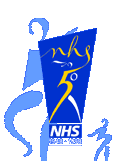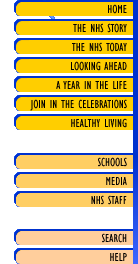 
 |
|
  |
 |

|
| |
- 1.
- What is the sequence of checks to be made in your initial assessment of a casualty?
- a.
- danger, response, breathing, circulation, airway
- b.
- airway, response, breathing, circulation, danger
- c.
- response, danger, breathing, circulation, airway
- d.
- danger, response, airway, breathing, circulation
- e.
- danger, airway, breathing, circulation, response
- 2.
- What is the treatment of a casualty having an asthma attack?
- a.
- advise the casualty to breathe through the nose
- b.
- give sips of water to drink
- c.
- lay the casualty on the floor and raise the legs
- d.
- make the casualty breathe into a paper bag
- e.
- sit quietly, leaning forward on a support
- 3.
- Which of the following conditions is the first thing to consider with a casualty who has been electrocuted by domestic supply - after you have ensured you are not likely to be electrocuted?
- a.
- possibility of the heart having stopped
- b.
- extent and depth of burns
- c.
- severity of shock
- d.
- possibility of internal injury
- e.
- fractures as the casualty is flung from the supply
- 4.
- What is the main purpose of raising the legs of a casualty in shock?
- a.
- to help breathing
- b.
- to prevent nausea
- c.
- to improve the blood flow to the brain
- d.
- to slow down the heart beat
- e.
- to speed up the heart beat
- 5.
- In what position should you place a conscious casualty suffering from a heart attack?
- a.
- sitting comfortably with a pillow under the knees
- b.
- Recovery position
- c.
- lying with head low and feet raised
- d.
- lying with head raised and feet lowered
- e.
- seated in a chair, leaning forward
- 6.
- Where should you feel for a pulse on a conscious adult casualty?
- a.
- at the temple
- b.
- at the neck
- c.
- on the right side of the chest
- d.
- at the wrist
- e.
- inside the upper arm
- 7.
- Which should you recommend for a casualty who has just sprained an ankle?
- a.
- apply local heat
- b.
- rest the leg elevated
- c.
- rest the leg lowered
- d.
- keep exercising it
- e.
- massage the swelling
- 8.
- What is the minimum time for which you should cool a burn or scald?
- a.
- 2 minutes
- b.
- 3 minutes
- c.
- 5 minutes
- d.
- 7 minutes
- e.
- 10 minutes
- 9.
- When should an anti-tetanus injection be reviewed?
- a.
- after 1 year
- b.
- after 2 years
- c.
- after 5 years
- d.
- after 7 years
- e.
- after 10 years
- 10.
- What is the most effective position for treating someone who has fainted?
- a.
- sitting with head lowered between their knees
- b.
- half-sitting with head and shoulders supported
- c.
- lying on back with knees supported
- d.
- the Recovery position
- e.
- lying on back with legs raised
Answers...
These questions were kindly provided by St John Ambulance. If you would like to find out more about St John Ambulance click here.
|
 |
|
|
|
|
|
Copyright © 1998, NHS |
|